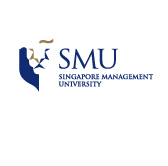Publication Type
Journal Article
Version
submittedVersion
Publication Date
1-2022
Abstract
This paper evaluates the impacts of migration flows and transportation infrastructure on the spatial transmission of COVID-19 in China. Prefectures with larger bilateral migration flows and shorter travel distances with Hubei, the epicenter of the outbreak, experienced a wider spread of COVID-19. In addition, richer prefectures with higher incomes were better able to contain the virus at the early stages of community transmission. Using a spatial general equilibrium model, we show that around 28% of the infections outside Hubei province can be explained by the rapid development in transportation infrastructure and the liberalization of migration restrictions in the recent decade.
Keywords
COVID-19, Spatial transmission, Migration, Transportation infrastructure, General equilibrium spatial model
Discipline
Asian Studies | Behavioral Economics | Public Health | Regional Economics | Transportation
Research Areas
Applied Microeconomics
Publication
Journal of Urban Economics
Volume
127
First Page
1
Last Page
8
ISSN
0094-1190
Identifier
10.1016/j.jue.2021.103351
Publisher
Elsevier
Citation
LI, Bingjing and MA, Lin.
JUE insight: Migration, transportation infrastructure, and the spatial transmission of COVID-19 in China. (2022). Journal of Urban Economics. 127, 1-8.
Available at: https://ink.library.smu.edu.sg/soe_research/2503
Copyright Owner and License
Authors
Creative Commons License

This work is licensed under a Creative Commons Attribution-NonCommercial-No Derivative Works 4.0 International License.
Additional URL
https://doi.org/10.1016/j.jue.2021.103351
Included in
Asian Studies Commons, Behavioral Economics Commons, Public Health Commons, Regional Economics Commons, Transportation Commons


